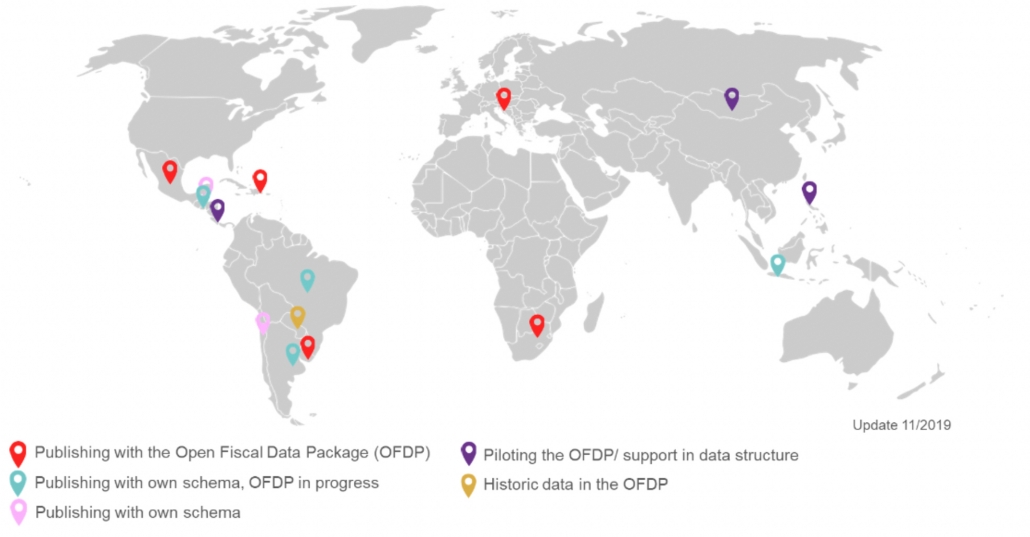
Proactive transparency mechanisms, in most cases, lacks understanding of the users and the needed flexibility to technological changes considering the way society gets and consumes information. Therefore, they rarely enable systemic change and achieve limited results against their envisioned objectives. Renzio and Mastruzzi (2016) conducted a survey showing that CSOs are dissatisfied with the information that governments make available because it is not detailed or useful enough. Their study concludes that there is a significant demand for better organized budget data, including a greater level of detail. It also emphasizes the need to review disclosure practices in terms of reusable data formats, the quality of online portals/websites, and the ability to cross-reference different datasets. The adoption targeted digital tools has been constantly in GIFT agenda. In this sense, in the coming years GIFT will seek to generate worldwide gains in user-centered fiscal transparency that uses digital tools in a strategic way, built from the experiences and lessons learned from around the world.
Achieving a user-centered publication does not mean to publish the usual information with visualizations and simpler language. It requires understanding the audience and adapting contents considering the format, granularity and structure that will enable use and decision-making. It also requires that an environment in which technological innovation is embraced and enabled.
 Through peer-exchange and technical collaboration, GIFT has been involved in the development, improvement and publication of 11 fiscal transparency portals and is collaborating in two additional ones.
Through peer-exchange and technical collaboration, GIFT has been involved in the development, improvement and publication of 11 fiscal transparency portals and is collaborating in two additional ones.
Through peer-exchange and technical collaboration, GIFT has been involved in the development, improvement and publication of 11 fiscal transparency portals and is collaborating in two additional ones.
While the source publishers are governments, civil society organizations have also worked in developing platforms that reuse the information and have benefited from the sharing of experiences. This is the case of INESC in Brazil, Fundar in Mexico, Observatorio Fiscal del Gasto in Chile, ACIJ in Argentina, PSAM in South Africa, among others.
GIFT has supported the development of a specification to open data of budget and spending that helps publishers standardize the publication and facilitates reuse of the data. Up to 2019, we have worked in familiarizing governments and civil society with spending open data and have provided a digital tool to publish such data, the Open Fiscal Data Package. Indeed, in 2019 we have witnessed a strong uptake of MoF publishing budget and spending open data, as well as a more solid external use of the published data. Through the support and peer-exchange, 12 countries have now published their budget and spending open data and three more are in process, as can be seen in the map below.
The technical assistance and tools to publish and use open fiscal data are well appreciated by governments and civil society. For this reason, we expect to step up GIFT support and broaden its scope. Finally, together with the Open Contracting Partnership, GIFT Network has developed an extension of the Open Contracting Data Standard, which requires the interoperability of treasury and e-procurement systems. With this in mind we are well positioned to continue the development of complementary data schemas and enabling linking data for richer analysis and insights to improve governance.
While seeking to improve transparency following global norms, GIFT Network members have undergone improvements of internal systems, such as the case of Mexico which has developed a new Public Investments Management System and a subnational governments’ expenditures reporting system and has modified the accounting system to link it with the e-procurement system. South Africa is improving the collection of projects at the provincial level. Chile is improving the public works monitoring system, and ongoing effort in Mongolia to improve the Glass Account reporting and publication system, to name a few.
In the past, GIFT Network has supported the peer-exchange to facilitate progress in publication, including webinars in the matter, such as the webinar on Good Internal Systems for Good External Publications with the IMF, CABRI and the IT department of the Ministry of Finance of Argentina and the one on Building Fiscal Transparency Portals with INESC from Brazil, the IT department of the Ministry Planning Department of Brazil and the National Treasury of South Africa.
What we seek
to achieve
For the 2020-2022 Strategy we will scale-up and become more results-oriented, with the following activities:
A) Fiscal Open Data Services
How it works
The publication support from GIFT will rely on three pillars:
• Data schemas. So far, GIFT has focused on the development of the budget and spending data schema, however we are ready to broaden to a bigger spectrum of public financial management. We will develop schema for revenue and cross-cutting subjects, including environmental finances, non-financial performance, and gender-responsive budget.
To develop each of the new data schemas GIFT will require to fund research and specialists for the data structure. The data schemas for the cross-cutting subjects will be developed in collaboration with specialized organizations.
• Guidance and technical support to structure and clean the data. From experience in previous years, we are aware that publishers face the biggest challenges in correctly structuring the data before publication. Providing proper guidance and follow up will stimulate, not only more publication, but better data quality.
• Tech to publish and use open data. Tools for packaging different data schemas will be part of the Open Fiscal Data Package (OFDP) Structure to enable publication, while we will further include tools for developers and data scientists to promote reuse.
Through the Open Data Services, GIFT seeks to contribute in:
1. Facilitate governments transition to systematically publish public finances open data and enable its use and reuse by the public.
2. Provide guidance on how to structure open data for topics that have important international relevance for sustainable development, including environmental finances, non-financial performance, and gender-responsive budget.
3. Enable interoperability of data schemas to enhance the possibilities of the use of data in analysis and decision making and the country and international level.
B) Good Internal Systems for Good External Publication
How it worksFinancial Management Information Systems (FMIS) are set up to generate timely, relevant, and reliable financial data and reports that support financial decision making and improvements in fiscal discipline, expenditure control. In this sense, building strong and comprehensive fiscal transparency is highly intertwined with the development of FMIS. However, technology departments at ministries of finance have been often neglected on the subject, while they receive requests from other ministries’ departments and civil society, to publish relevant information with high-quality open data. In many cases, these IT teams lack the needed tools, capacity or training for it.
In this context, we seek to enable peer-learning and collaboration for GIFT Stewards IT departments, reinforced with innovative approaches for Govtech and CivicTech, through three main actions:
• Specialized collaborative group for IT departments. Peer-learning and collaboration on technological solutions for internal systems and publication.
• Two international workshops for peer-learning and training for IT departments from governments and civil society on innovative approaches such as disruptive technologies, agile development and GovTech solutions.
• Repository of open code for CivicTech that will facilitate taking advantage of economies of scale in development.
C) Tutorial to develop user-centered fiscal transparency portals
How it works
After several years of working with government Stewards in building digital platforms to provide fiscal information that addresses the users’ needs, the GIFT Coordination team has produced an online tutorial with a basic guide to concepts and actions to consider in the process of publishing budget information with a user-centered approach. The tutorial allows participants to understand the importance of publishing budget information, take into account the target audience, and recognize the different steps to develop a budget transparency portal or platform with a user-centered approach. The tutorial also helps governments identify potential users and segment the audience of a budget transparency portal, discover innovative tools to take full advantage of the possibilities that current technological progress offers, and acquire techniques to monitor the results of the publication.
D) Fiscal Data for Emergency Response: Guide for COVID-19
How it worksThe objective of the Guide is to provide a practical tool for practitioners, both those within governments and those outside of government, to help them identify the datasets and data fields, using a user-centered and purpose-oriented approach, that are required for informed decision-making processes and for meaningful fiscal transparency, within the context of COVID-19. By facilitating identification, we expect to facilitate the process of gathering, organizing and publishing such data in ways that enable its internal and external reuse.
In cases where current information systems and gathering processes are unable to generate the requisite data, this Guide can assist in informing the strategic prioritization of data and the accompanying development of processes and systems required to release data in the short, medium and longer-term.




